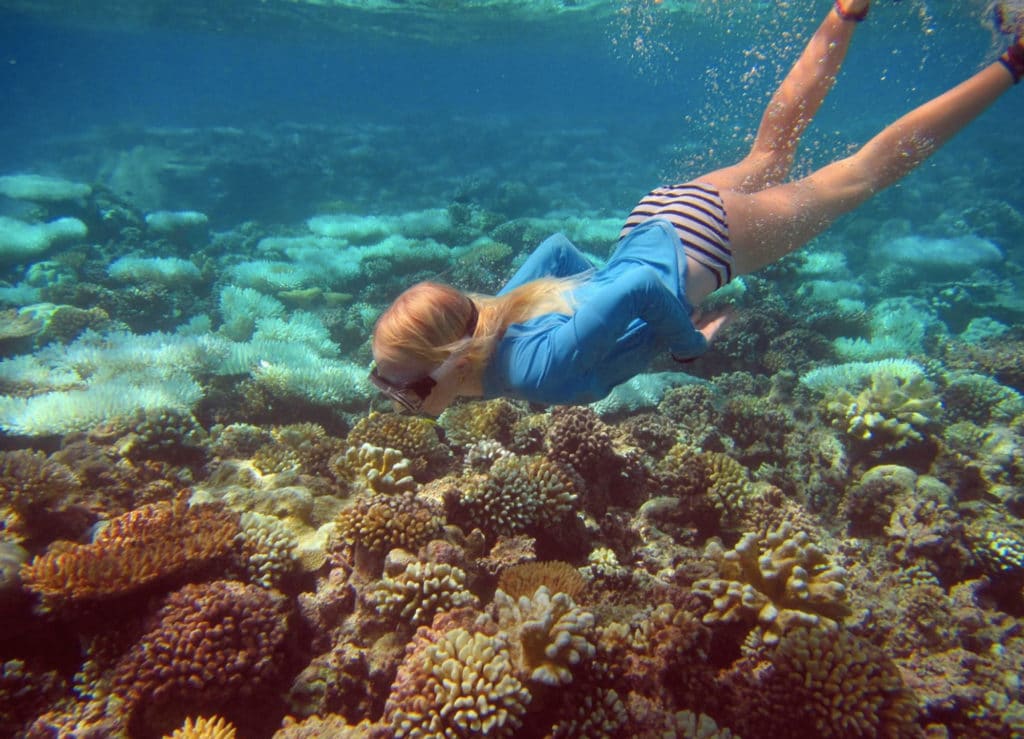
This story originally appeared on Sailing Totem.
Immersing in the natural world was a meaningful part of our cruising dream. We anticipated the rewards of living with a lighter footprint, and helping our children internalize the wonder that is our planet.
Senegalese poet and naturalist, Baba Dioum:
“In the end, we will conserve only what we love. We will love only what we understand. We will understand only what we are taught.”
And so we hope to teach our children about the world we live on and the people who inhabit it, and to instill value and advocacy, while seeing breathtaking natural beauty. And yet what we saw over and over in hand with that beauty was the devastation of a planet abused, while whitewashed and kept at a distance from privileged lives.
While I remain grateful for our far-flung travels, looking back it smacks of the privilege we have to observe and process and consider from a safe distance. How will we use this opportunity? One way is to bear witness. And so, here, we bear witness to a few of the environmental tragedies we have seen around the world.
Borneo- Illegal Mines Poison Rivers
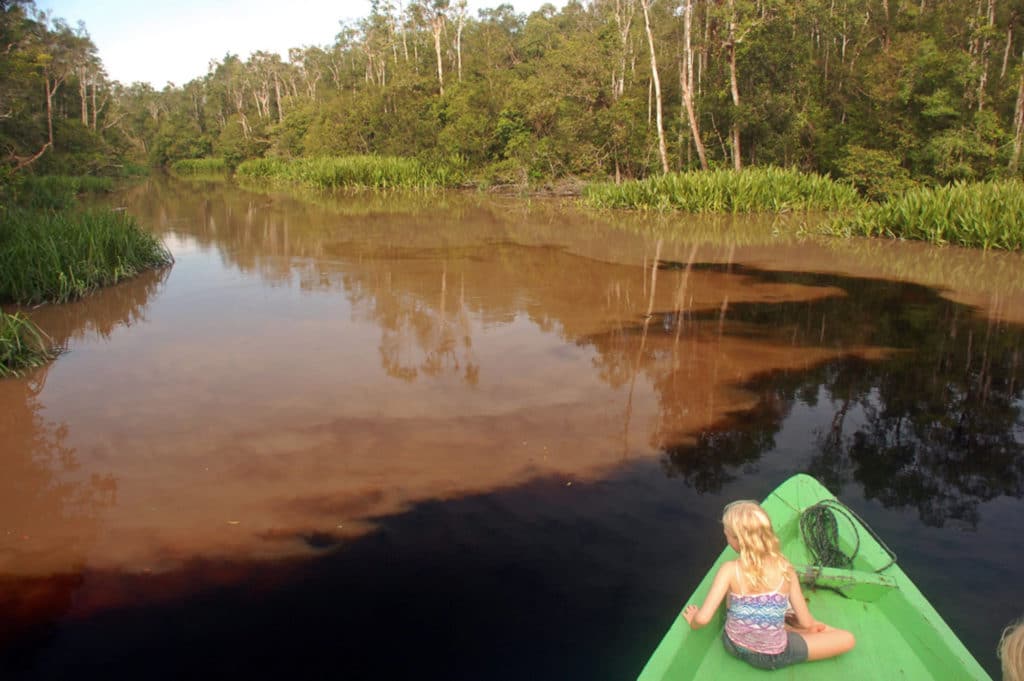
Winding up the Kumai river to see orangutans in the wild, in one of their last natural habitats, was anticipated to be a highlight of our six months in Indonesia. But the indelible impression this national park left on us was as much of environmental tragedy as it was the apes. That the protected parklands they were meant to live on had been appropriated for palm oil plantations, their vibrant green sometimes visible behind the fringe of tropical forest. On our way to the orangutan’s preserve, we navigated through runoff from an illegal gold mine and watched the milky water cut into the tannic river. Nearby indigenous Iban people fished to feed their families.
Sydney- Kids and Haul
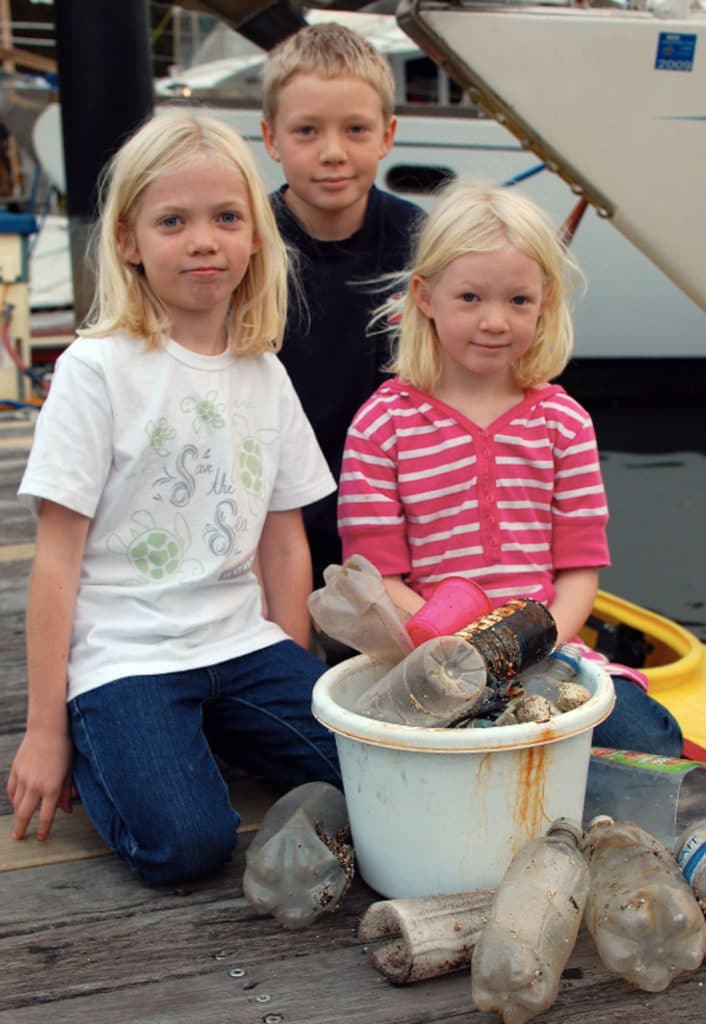
In Australia, everyone knows the phrase “Clean Up Australia” after the event (and subsequent culture) initiated and promoted by Australian solo sailor, Ian Kiernan. Seeing plastic trash litter the shores of pristine islands, thousands of miles from anywhere, left an impression on Kiernan – and on our kids, who embarked on a mission to collect and dispose the garbage that floated around the marina where we lived in 2011, trapped in shocking volume by the dock floats.
Despite cultural orientation toward sustainability and waste management, the consumer driven population produces (as we do) an astonishing amount of trash. Every time it rained, the lip service paid vs action taken to environmental stewardship is painfully clear. Runoff and spillover carries bottles, Styrofoam, ear plugs by the hundred, entire computer cases, and of course plastic bottles until every berth in the marina is clogged, and the water beneath obscured by floating trash.
Chagos- Fluorescing Coral
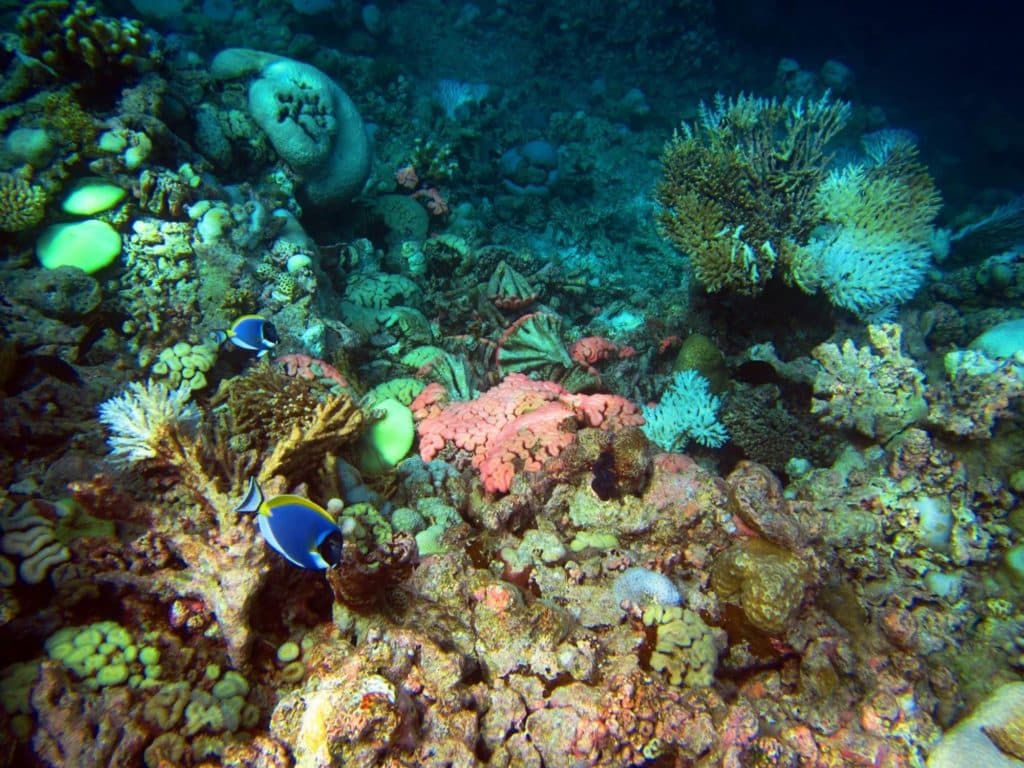
The British archipelago of Chagos sits nearly smack in the middle of the expansive Indian Ocean. Meaningful populations don’t exist for wide stretches of ocean, and yet the coral here was stressed by the man-made impact of climate change. Underwater, these equatorial islands held striking corals in fluorescent colors. Beautiful? To some eyes, but those fluorescent colors presented instead of ‘normal’ coloration because the coral is bleaching in response to stress from unusually high water temperatures. If the conditions don’t improve, the coral dies. A marine biologist cruising through just ahead of us estimated 80 to 90% of the coral was bleached or bleaching during our 2015 stay. (To learn more about this fluorescing phenomenon, and coral bleaching, see the excellent documentary Chasing Coral – currently on Netflix.)
Comoros- Burning Garbage Mountain
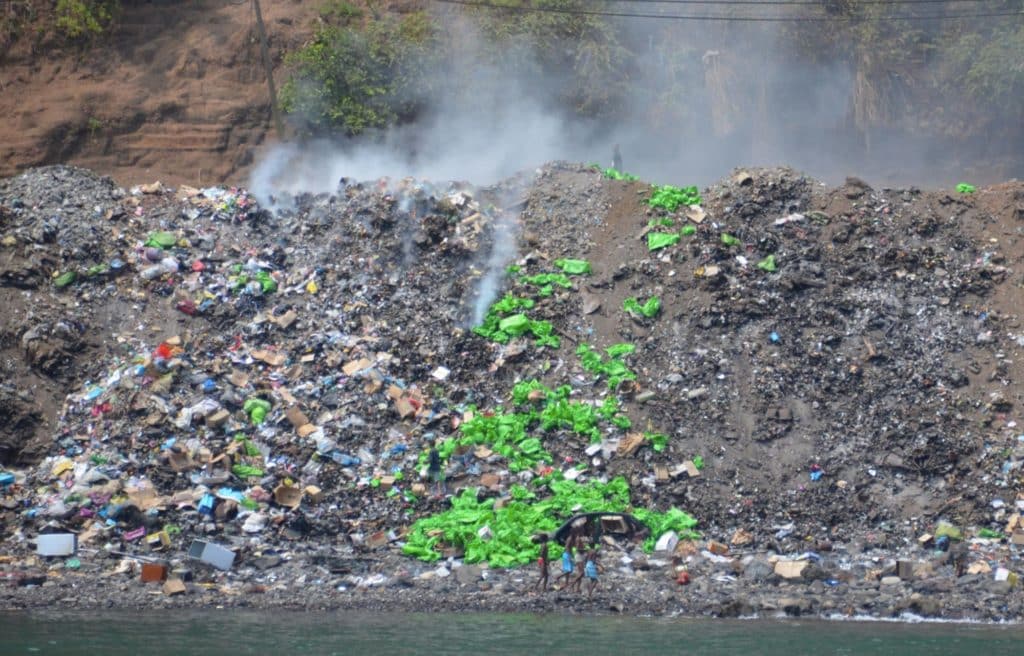
Garbage disposal is a problem in much of the world that cruisers traverse. At our first anchorage in Comoros, the island nation between Tanzania and Madagascar, a literal mountain of garbage lined the beach. Cars backed up to dump loads; it appeared to substitute for a public facility, and burned 24×7. When winds shifted to blow it towards Totem, the stench of plastic burn made breathing difficult. When surviving from day to day is your priority, working out a healthier waste management system is harder to prioritize.
Indonesia- Daily Tidal Garbage
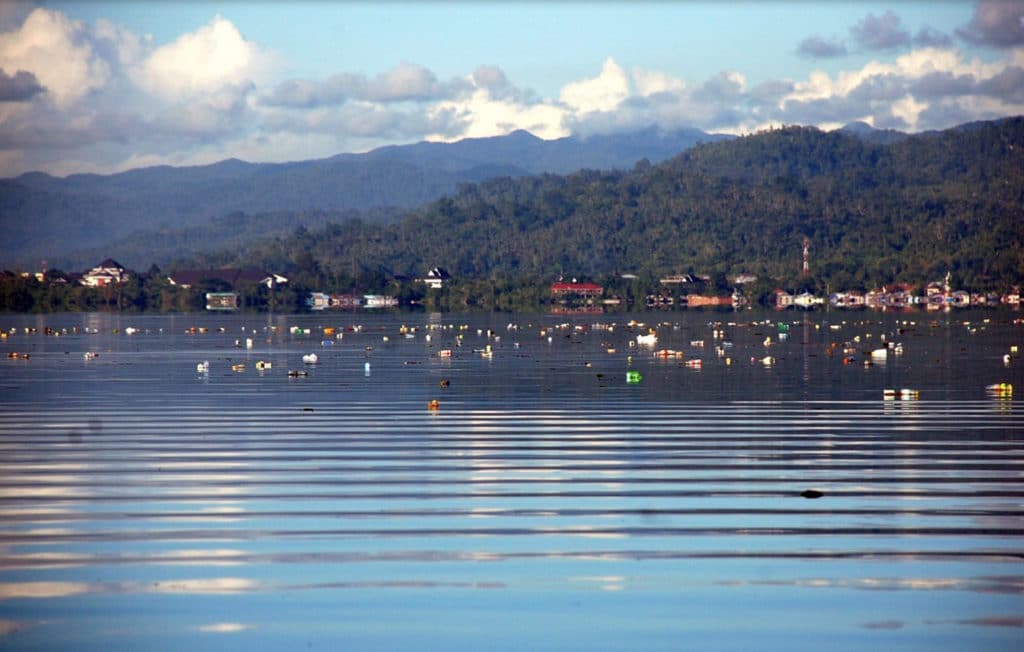
Most of the islands we visited in Indonesia don’t have waste management, but Ambon was an exception. Not only was there a recycling facility in development, but the entire community had public days for picking up garbage! We’d see lines of children in brightly colored school uniforms collecting garbage to be properly sorted and disposed. And then, the tide would run through a cycle, and once again the bay would fill with floating plastic. Despite the public effort, the public will lags and there remained no stigma against throwing wrappers on the ground where you stand.
Indian Ocean- The Thinking Chair
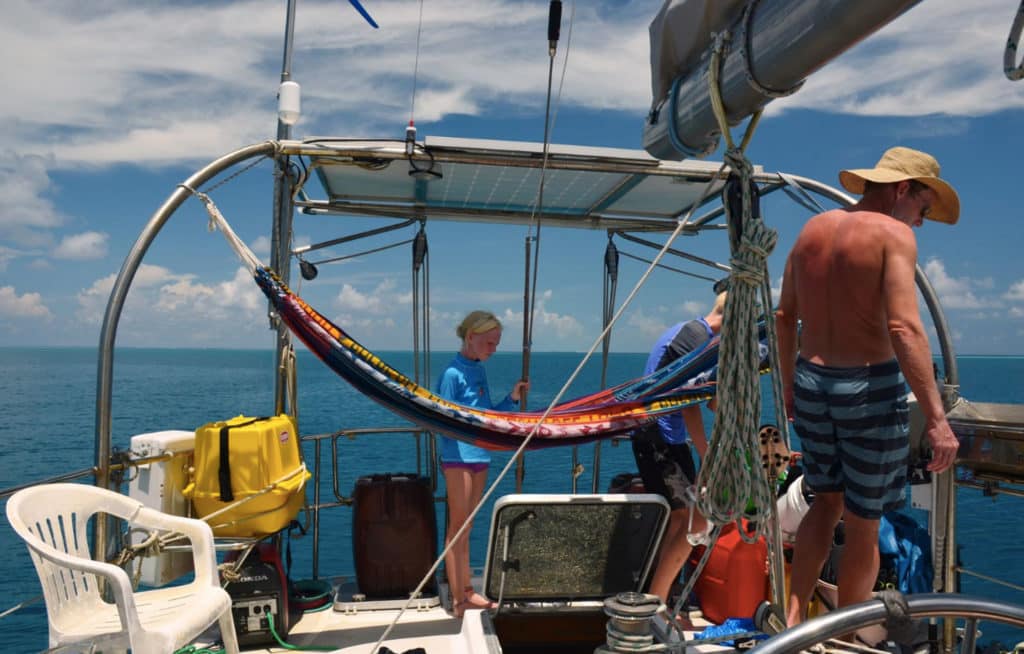
When it’s possible, we pick up garbage and carry it to be disposed. It’s rarely practical; the facilities simply don’t exist. But occasionally it adds a colorful slice to life for a while. While sailing through atolls in the Maldivian chain, we saw a larger object floating; it proved to be a plastic chair. This chair subsequently attended numerous beach potlucks, and was a suitable aft-deck “thinking chair” before being re-homed to an island where it was put in use.
Sri Lanka- Water Sampling
We see a lot, and it’s natural to want to do something about it. Participating in citizen science projects is a goal but the logistics can be complicated. But water samples we took along the way – here, filmed in Sri Lanka’s Trincomalee harbor—fed into a global study on microplastics. 48°N readers have the benefit of living in an area teeming with opportunities to learn and contribute!
Uninhabited Islands Everywhere – Garbage Nets
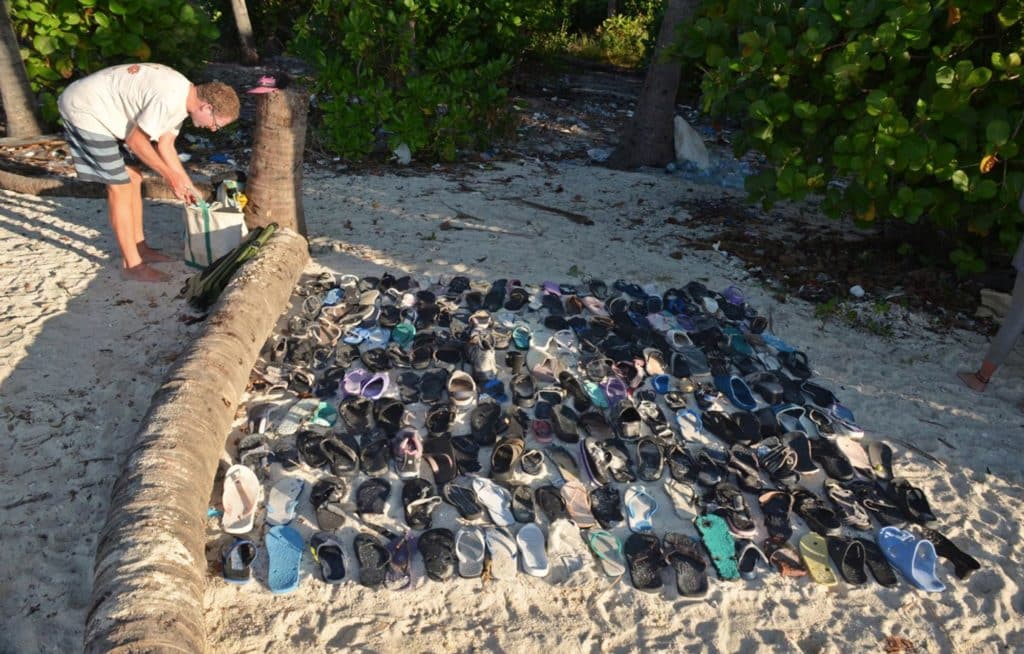
The cruisers dream an uninhabited tropical island to call your own for a while! That dream bubble pops when you land on the beach. Islands are nets, catching all that floats their way. The most trashed beaches we’ve been on are where nobody lives, because there is nobody to be offended by the sight and pick it up—or see the utility in the flotsam and take it for use. On this island, going ashore to collect firewood turned comically into going ashore to collect plastic shoes. This square of around 200 shoes represent about 20 minutes worth of collection in an area where plastic bottles outnumbered shoes.
Maldives- Sea Level Rise
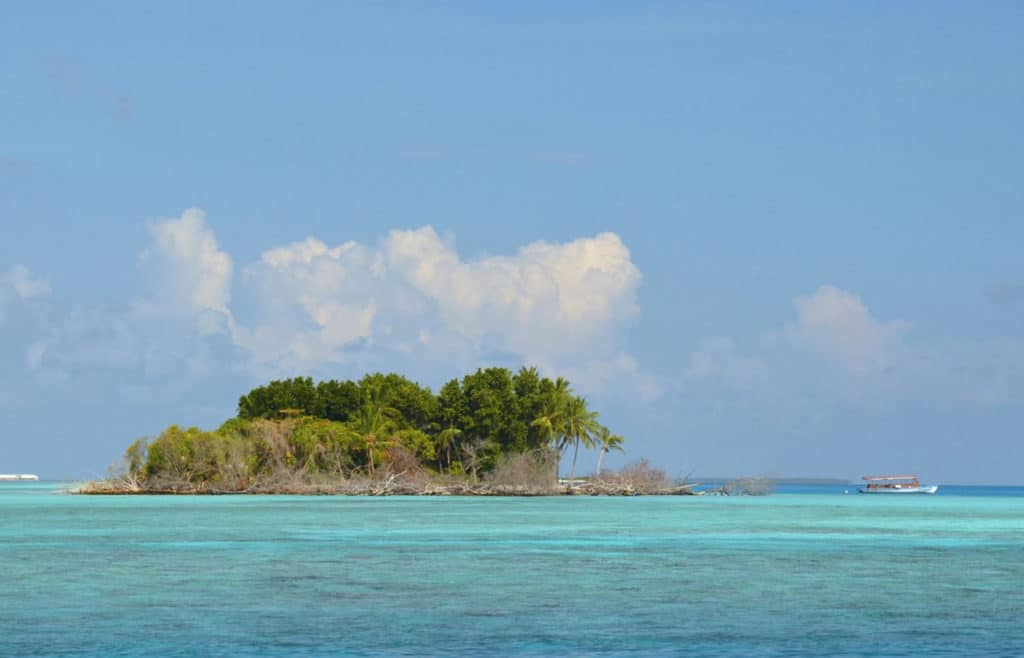
The highest natural point of land in Maldives is less than 10 feet tall. Most of the nation sits at mere inches above sea level on sandy atolls. As sea levels rise, these islands are losing ground. Highly recommended by Totem’s crew, the excellent documentary “The Island President,” the story of Maldives’ former head of state and his effort to get attention for their plight at the Copenhagen climate convention.
Mexico – Everywhere Garbage
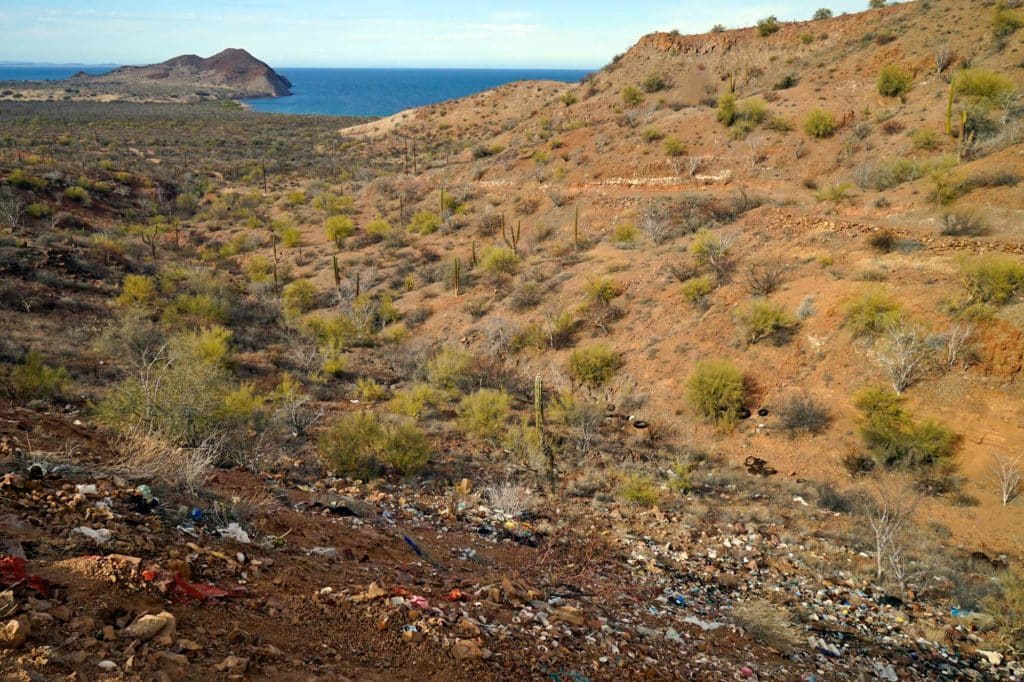
Garbage is poorly managed in many places for a range of reasons. The acrid smell of burning plastic wafting to Totem upon our arrival to Mexico in the fall of 2008 sadly offered a nostalgic throwback to the time I lived in Southeast Asia. In rural or poor areas, there and here, local waste management often uses one of the most toxic methods possible: the low-temperature burn. EPA studies now show that the relatively low temperatures of beach or backyard fires (as compared to commercial incinerators) for burning create staggeringly toxic emissions, and not just from plastics. And yet this is probably the most common method of waste disposal we have experienced as cruisers. Image above snapped when we rented a car to see grey whales on the Pacific coast earlier this month; we pulled into a turnout for what we thought was a scenic vista, but was actually an impromptu garbage dump.
Now What?
Friends of ours darkly refer to their cruising adventures as The Farewell Tour. I reject the perspective of “ah, too bad you couldn’t see it when…” (fill in the blank of someone’s story about visiting a place X years ago, or before Y happened; it’s so tiresome, we know)—but in this case there’s a different bit of urgency. So much is destroyed so we can have fashionable clothing or cheaper goods or industrial oil to fuel our consumer machines.
I don’t have any suggestions for what you should do. Maybe this ramble through the widespread problem—and how it lives unmasked in places outside our usual view—prompts introspection. Last Saturday at 8:30pm in your time zone was Earth Hour. Started in Sydney, Australia, in 2007 as a symbolic hour without lights on, it’s been a catalyst for awareness—and some driving legislative changes. This year’s virtual video is… intriguing! We took part from our corner of Mexico.








